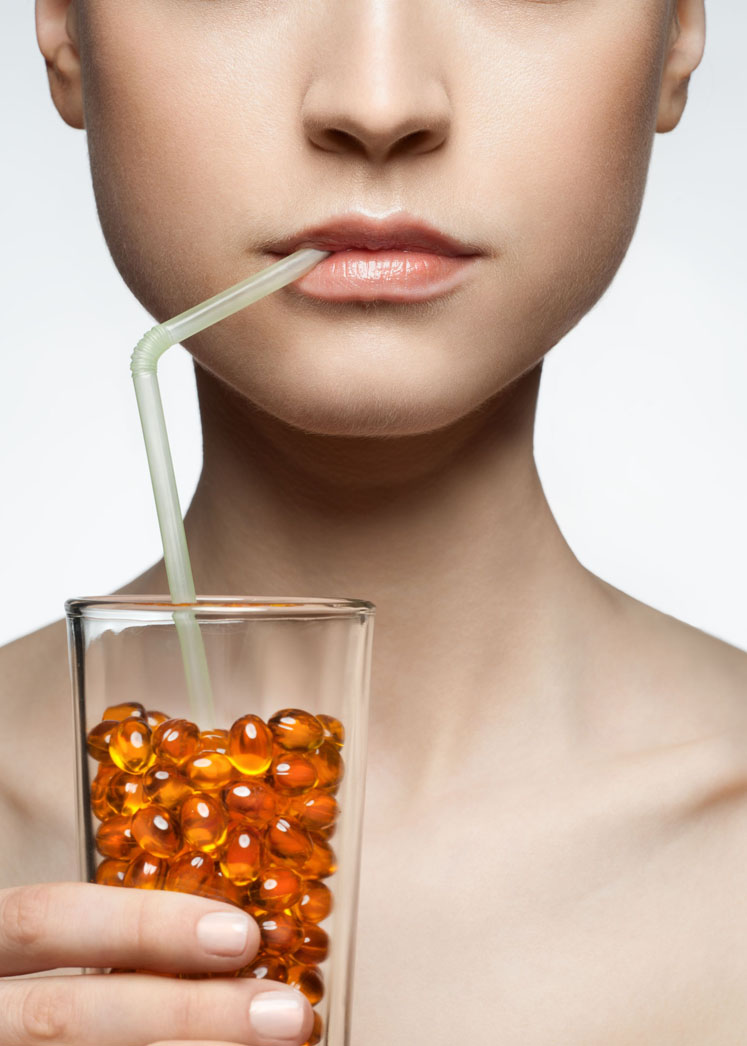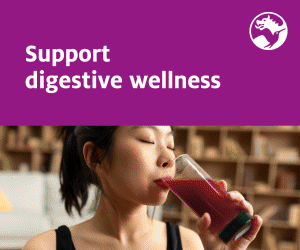"Let food be your medicine and medicine your food," is Hippocrates' much-quoted phrase. A few decades ago, a healthy diet consisted of fruits, vegetables, whole grain products and a little fat and sugar. In recent years, this no longer seemed to be enough for many people: a constant supply of “in season” foodstuffs, the GMO debate and online media as a 24/7 information source have sown doubts.
Whether alleged or actual, nutrient deficiency is a hot topic; and, as a result, food supplements have become an increasingly important market segment. Nowadays, the functional food story is one of success. But what does this mean for the industry and product development … and which trends are here to stay?
Functional foods and supplements: steady growth ahead
The market research and consulting company, Grand View Research, forecasts a CAGR of 7.9% worldwide for functional foods and beverages until 2025. Research and Markets also reaches the same conclusion — and considers this growth to be long-term: “The increasing trend of consuming these products is expected to sustain throughout the forecast period.”1
Yet, many of today's high-tech products have nothing to do with the original goal of functional food: to counteract malnutrition. Today, it’s all about cardiovascular health, strengthening the immune system, performance, a healthy gut and beauty from within, to name a few.
For dietary supplements, Mordor Intelligence projects the global market to grow at a CAGR of almost 7% in the coming 5 years, with the vitamin segment steadily growing and the fatty acid segment expanding owing to the popularity of omega-3-based supplements.2
Driving forces: aims, habits and beliefs
After an antioxidant-rich superfood ancient-grain bread for breakfast, you can indulge in a probiotic shot to support your intestinal health and immune system as a mid-morning snack. Then, pop a quick dietary supplement at noon because you’re pressed for time.
That gnawing hunger in the afternoon could be satisfied with a protein-enriched, low-glycaemic fruit yoghurt, ensuring that your stomach is not too full to visit the gym after work. Plus, why not down an isotonic drink to keep you pumped up during the training session?
Dinner is actually a normal meal, maybe more protein, fewer carbs, and the crisps you nibble in the evening are made of chickpeas, which are rich in protein and low in fat.
The eating habits of many nutrition-conscious people in the western industrialised countries are similar: it’s not one pill, it’s not one miraculous vegetable, it’s a mixture of everything that’s designed to meet your personal needs.
The boundaries between pharmaceuticals, dietary supplements and food are irrelevant in the eyes of consumers … as long as the benefits outweigh the risks. Therefore, it’s not without reason that trade fair organiser, Informa Markets, announced last year that the two leading ingredient trade shows, Food ingredients Europe and Health ingredients Europe, will be colocated from 2020 onwards.
The driving force behind this development is, on the one hand, the trend towards self-optimisation and the goal of taking what Nature gave you at birth and, combined with a new form of mindfulness, creating a better version of yourself. On the other hand, the dark side of affluence has raised demand or products with that “little bit extra.”
It’s no coincidence that illnesses related to prosperity are seen to be the scourge of our time and threaten to overload health and social systems. Diet-related prevention is the phrase of the moment. For many consumers, staying healthy is too simple a concept; instead, they’re embracing life as state of well-being that goes far beyond an absence of illness.

The industry supports self-optimisation
Product developers understand these wishes and the motives of their customers, which is increasingly reflected on the labels of supermarket products that promise energy, health and wellness. And it’s often not so much about EFSA-style health and nutrition claims; sometimes, it’s about creating a wellness halo that fuels consumer interest — be it a Matcha-infused near-water drink or a protein-enriched yoghurt with a woman doing yoga on the packaging.
What many of those more-or-less functional products have in common is the message of self-optimisation and reaching daily performance highs. With professional and private lives moving ever faster, this is a decisive factor that’s also reflected in current trends.
Sports nutrition, for example, is a category that evolved from a professional niche to mainstream use for both weekend warriors and those who need to positively impact their general well-being during the day. Against this background, it’s not surprising that a CAGR of 12.2% is predicted for sports nutrition in the coming years.3
But these new target groups demand other functionalities, such as balanced energy, high in protein, low in sugar and fat, easy-to-consume, tasty, etc. “When sports nutrition was still a professionals-only domain, products were not always easy to use and required preparation information. Since then, various formats, including bars or shots, have become available.
At this year’s colocated Fi and Hi Europe, challenges in this area are also a hot topic — and they’re becoming more diverse: from tailor-made products for various training applications to vegan sports nutrition,” says Julien Bonvallet, Brand Director at Informa Markets, organiser of Fi Europe co-located with Hi Europe.
Contribution to an ageing society
One target group for whom daily performance can become a challenge, but who nevertheless have wide-ranging activity and health demands, is people aged 60 and older. It’s not without reason that healthy aging is a major industry trend — and one in which the shift in delivery form from supplements to functional foods is particularly evident.
According to Euromonitor International, by 2030, more than 990 million people will be 65 or older.4 The list of this age group’s needs is almost endless — from preserving immunity or energy levels to beauty enhancement, eye health and heart health.
But, owing to swallowing problems and “pill fatigue,” new delivery forms have to be created. Although in the beginning it was technologically difficult to integrate active ingredients into cardiovascular products — such as CoQ10, its activated form, ubiquinol, and/or fish oils (DHA) — fortified products for heart health foods in the form of bars, etc., are now much more common.
In particular, DHA can be found in dairy products, breakfast cereals and even sausages, making it easy for consumers to make a contribution to heart health with or without a tablet.
“Yet, at the same time, we’re also seeing movement in natural ingredients,” continues Julien Bonvallet: “The return to Nature and taking advantage of the positive effects of plant substances is an important driver in the ingredients industry, as can be seen in our show-within-a-show, Natural ingredients Ni. Botanicals are a hot topic in 2020, especially in the field of heart health. Turmeric and green coffee are now established components of both classic dietary supplements and functional foods.”
Another evolving trend is beauty from within. Functional food pioneers in Japan have created high-tech soft drink formulations containing vitamins, collagen and hyaluronic acid, which are particularly popular with women. Such cosmetic foods have also made their way onto the European market, including collagen drinks, superfood recipes based on antioxidants such as açai berries or gummies containing keratin.
Eyes on gut health
“A sustainable trend that we’ve already seen at recent trade fairs is innovations that focus on intestinal health,” observes Julian Bonvallet. As demand grows, so does the range of products; in addition to classic food supplements with a predominantly probiotic orientation, fibre-enriched foods are particularly popular.
Plus, active cultures have also gone beyond the dairy sector; probiotic chocolate or muesli bars promise to contribute to health even as a snack. Although probiotics have been of interest since the mid-1990s, when the first probiotic yoghurt cultures conquered the European market, a large number of probiotic and prebiotic foods and dietary supplements are now available. Intestinal health has evolved from a taboo topic to a trend!
A disturbed colon or an imbalanced intestinal flora is no longer simply regarded as an obstacle to inner well-being, but rather as the cause of various illnesses; whether referring to inflammatory processes or neurological disorders, the gut-brain axis is often discussed in scientific as well as popular media.
Julien Bonvallet notes: “The effects of a healthy intestinal flora on the body’s own immune system are — especially in times of a pandemic — more topical than ever. With new studies coming up every year, gut health has been a constantly hot topic at Fi Europe and Hi Europe shows for years.”
According to Euromonitor International digestive health is not only one of consumers’ top health concerns, it was also the second largest positioning in global packaged food sales in 2018.
Blurring boundaries: opportunity or challenge?
What is certain is that exciting new product developments are mushrooming and consumers are more open to them than ever. Both challenging and lucrative, manufacturers that have mastered the traditional classics, but also have the courage to innovate and create novel hybrids, are entering into collaborations that were, until recently, unthinkable.
At the same time, producers of original solutions are confronted with new demands: taste and mouthfeel must be optimised, but issues such as sustainability — with all its social and ethical implications — clean label and the naturalness of ingredients must be addressed as well.
It is here, though, where a lack of globally reliable standards for packaging claims exists. It’s an area of uncertainty for manufacturers and consumers alike, as the much-discussed ISO/TS standard 19657:2017 on 100% natural ingredients suggests.
Last but not least, the changing perception of food as an important contribution to health — almost as important as supplements and medicines — has blurred the border between food and pharma. In food development, more and more companies are taking a scientific approach.
Driven by Health Claim regulations, for example, scientific research methods and more comprehensive studies have become an important part of the food manufacturing process. Strictly controlled trials and medical studies are conducted to confirm and approve positive health effects.
The high costs and long development periods involved can be challenging for companies; but, in many cases, they could prove to be profitable investments in the future of nutrition.
“For many exhibitors and visitors, the new concept of Fi Europe being colocated with Hi Europe represents an important pooling of ideas. It provides the perfect opportunity for networking and finding the best ingredients, solutions and partners."
"With this realignment, we are ensuring effective sourcing in this rapidly merging industry, in which every ingredient must now be available as standard and organic, vegan, clean label or free from, and every active ingredient has to work in various supplement formats from shots to functional cookies,” Bonvallet concludes.
References
- Research and Market: Functional Foods Market Size, Share & Trends Analysis Report By Ingredient (Carotenoids, Prebiotics & Probiotics, Fatty Acids, Dietary Fibers), By Product, By Application, And Segment Forecasts, 2019-2025.
- Mordor Intelligence: Dietary Supplements Market - Growth, Trends, and Forecast (2020 - 2025).
- Mordor Intelligence: Sports Nutrition Market - Growth, Trends And Forecasts (2020 - 2025).
- Forecasts from Euromonitor International’s Future Demographic Model 2019.




